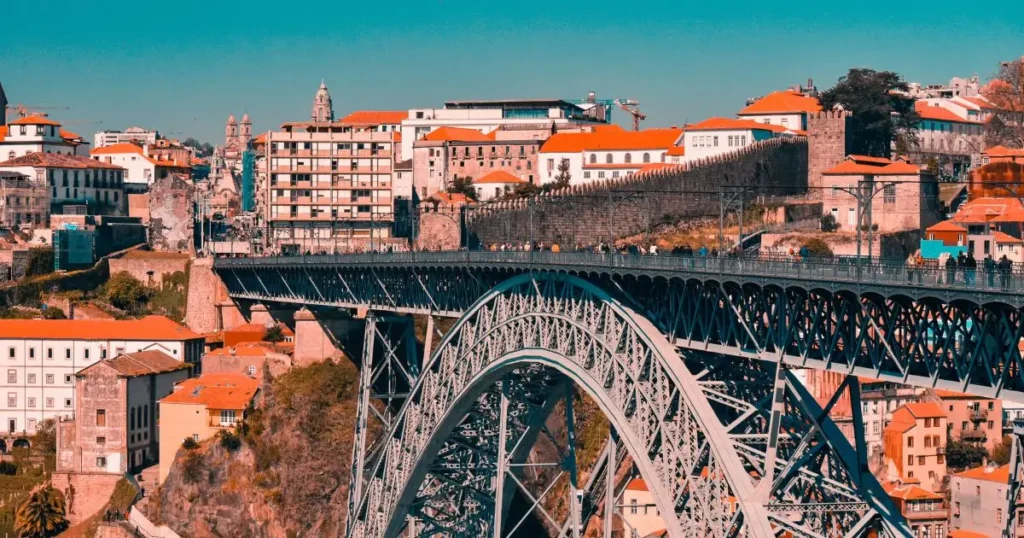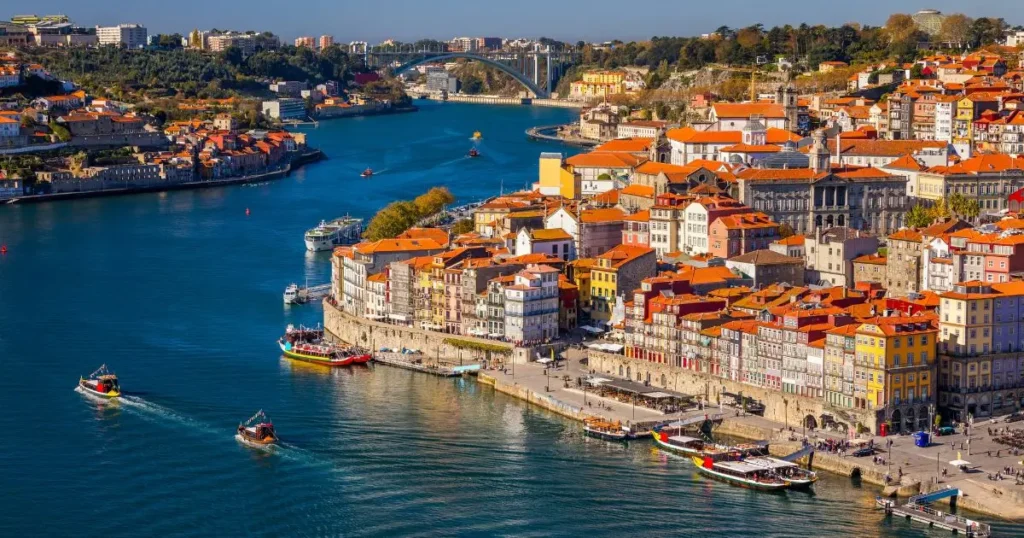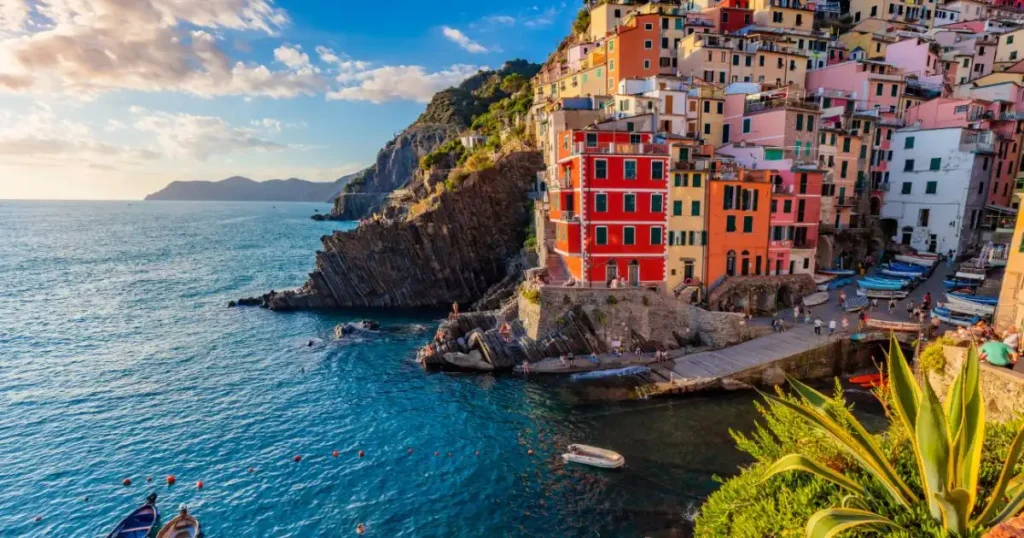Have you ever dreamed of wandering through colorful Lisbon neighborhoods, sipping port wine in the Douro Valley, or lounging on the golden beaches of the Algarve? Portugal has captured the hearts of travelers worldwide with its stunning landscapes, rich history, delicious cuisine, and warm hospitality. But when exactly should you book that flight? As someone who’s explored Portugal’s cobblestone streets and hidden coves across all seasons, I’m here to help you discover the best time to visit Portugal for your perfect getaway.
Portugal offers distinct experiences throughout the year—from sun-soaked summers perfect for beach lovers to mild winters ideal for city exploration without the crowds. Your ideal time to visit depends entirely on what you want to experience, where you want to go, and your tolerance for crowds and varying weather conditions.
In this comprehensive Portugal travel guide, I’ll break down everything you need to know about timing your Portuguese adventure perfectly, whether you’re planning a romantic getaway, family vacation, or solo adventure.
Quick Answer: When Is the Best Time to Visit Portugal?
For most travelers seeking the perfect balance of pleasant weather, manageable crowds, and reasonable prices, the shoulder seasons of late April to May and September to mid-October offer the ideal conditions for a memorable Portuguese adventure.
During these months, you’ll enjoy:
- Comfortable temperatures (65-75°F/18-24°C)
- Fewer tourists compared to summer
- Lower accommodation rates than peak season
- Most attractions operating on regular schedules
- Excellent conditions for both city exploration and beach visits
However, depending on your specific interests and the regions you plan to visit, other times might be perfect for you. Let’s dive deeper!
Understanding Portugal’s Climate & Seasons
Portugal enjoys a Mediterranean climate with regional variations from north to south. The country experiences mild winters and warm summers, but specific conditions vary significantly across regions.
Spring (March-May)
Weather: Temperatures gradually warm from 55-65°F (13-18°C) in March to 65-75°F (18-24°C) by May. Occasional rainfall, especially in March, but increasingly sunny days.
Pros:
- Blooming wildflowers and lush landscapes
- Fewer tourists than summer months
- Pleasant temperatures for sightseeing
- Easter celebrations and spring festivals
Cons:
- Some rain showers, particularly in early spring
- Water temperatures still too cool for swimming in most regions
Perfect for: City exploration, hiking, photography, wine tours, and flower festivals
Summer (June-August)
Weather: Hot and sunny with temperatures ranging from 75-95°F (24-35°C), particularly inland and in the Algarve. Coastal areas benefit from refreshing sea breezes.
Pros:
- Perfect beach weather
- Warmest ocean temperatures
- Vibrant atmosphere with numerous festivals
- Extended daylight hours for sightseeing
Cons:
- Peak tourist season with crowded attractions
- Higher prices for accommodation and flights
- Extreme heat inland, especially in July and August
- Need for advance bookings for popular restaurants and activities
Perfect for: Beach vacations, water sports, music festivals, and nightlife
Autumn (September-November)
Weather: Warm in September (70-80°F/21-27°C) cooling to 55-65°F (13-18°C) by November. Some rainfall, increasing as the season progresses.
Pros:
- Fewer crowds but still pleasant weather in early autumn
- Lower prices than summer
- Harvest festivals and wine events
- Beautiful fall colors in northern regions
Cons:
- Increasing chance of rain, especially from late October
- Shorter daylight hours
- Some coastal businesses begin to close in late autumn
Perfect for: Wine tourism, cultural experiences, hiking, and city breaks
Winter (December-February)
Weather: Mild in southern regions (50-60°F/10-15°C) but cooler and wetter in the north (40-55°F/5-13°C). Some snow possible in mountainous areas.
Pros:
- Lowest tourist numbers (except during Christmas/New Year)
- Best hotel rates and flight deals
- Authentic local experiences
- Christmas markets and celebrations
Cons:
- More rainfall, particularly in northern Portugal
- Some attractions have limited hours
- Cooler temperatures, especially at night
- Not suitable for beach activities
Perfect for: Budget travel, museum visits, local cuisine exploration, Christmas markets
Find out more must-visit Europe spots!
Monthly Breakdown: What to Expect Year-Round
| Month | Average Temp | Precipitation | Crowds | Notes |
|---|---|---|---|---|
| January | 46-59°F (8-15°C) | Moderate | Low | Winter sales, mild in Algarve, cooler north |
| February | 48-61°F (9-16°C) | Moderate | Low | Carnival celebrations, almond blossoms in Algarve |
| March | 50-64°F (10-18°C) | Moderate | Low-Moderate | Spring begins, wildflowers emerge |
| April | 53-68°F (12-20°C) | Light | Moderate | Easter celebrations, warming temperatures |
| May | 57-73°F (14-23°C) | Light | Moderate | Perfect climate, Sintra greener than ever |
| June | 63-79°F (17-26°C) | Very Light | Moderate-High | Santos Populares festivals, beach season begins |
| July | 66-84°F (19-29°C) | Very Light | Very High | Peak season, music festivals, hot and dry |
| August | 67-84°F (19-29°C) | Very Light | Very High | Busiest month, highest prices, warmest ocean |
| September | 64-80°F (18-27°C) | Light | High-Moderate | Grape harvest, perfect weather conditions |
| October | 59-73°F (15-23°C) | Moderate | Moderate | Beautiful autumn colors, wine festivals |
| November | 52-66°F (11-19°C) | Moderate-Heavy | Low | Chestnut festivals, increasing rainfall |
| December | 48-61°F (9-16°C) | Moderate-Heavy | Moderate | Christmas markets, New Year celebrations |
Best Time to Visit Portugal By Region
Lisbon:

Peak Season: June to August Sweet Spot: April-May and September-October Budget Option: November to March (except holidays)
Lisbon can get uncomfortably hot in summer, with temperatures sometimes exceeding 95°F (35°C). The shoulder seasons offer perfect temperatures for exploring the city’s many hills without overheating. Winter remains mild but can be rainy, though it’s excellent for museum visits and authentic fado experiences without the crowds.
Don’t Miss: Santo António Festival (June 12-13), Lisbon International Documentary Film Festival (October)
Porto:

Peak Season: June to August Sweet Spot: May and September-October Budget Option: November to April (except holidays)
Porto experiences more rainfall than Lisbon, particularly in winter. The city is magical in May when jacaranda trees bloom and in September-October when wine harvest activities are in full swing. Summer offers warm weather for exploring, while winter provides a more authentic experience despite increased rainfall.
Don’t Miss: São João Festival (June 23-24), Wine harvest in the Douro Valley (September)
Algarve:

Peak Season: June to September Sweet Spot: May and October Budget Option: November to April
The Algarve’s climate is the most consistently sunny in Portugal. Summer brings perfect beach weather but also crowds and peak prices. May and October offer surprisingly warm temperatures (often 70-75°F/21-24°C) with dramatically fewer tourists. Winter is mild and perfect for golf, hiking, and exploring historic towns without crowds.
Don’t Miss: Algarve international jazz festival (July), Sardine Festival in Portimão (August)
Madeira:

shot by: merencio.marta
Peak Season: July to September and December-January Sweet Spot: April-June and October Budget Option: February-March and November
Madeira’s subtropical climate means it’s a year-round destination. The island experiences two peak seasons: summer for its perfect temperatures and winter for those escaping colder European climates. April-June offers flower-covered landscapes, while October provides warm temperatures and fewer visitors.
Don’t Miss: Flower Festival (May), New Year’s spectacular fireworks (December-January)
The Azores:

shot by: wikaa_2233
Peak Season: June to September Sweet Spot: May and October Budget Option: November to April
The Azores experience more rainfall than mainland Portugal, but June through September offers reliable sunny weather. May and October can be excellent for hiking with fewer tourists, though with slight weather variability. Winter brings stormy conditions but also the advantage of almost no tourists.
Don’t Miss: Holy Ghost Festivals (May-September), whale watching (April-October)
Best Time to Visit Portugal Based on Interest/Activity
Beach Lovers
Optimal Time: June to September Alternative: Late May and early October can offer beach weather with fewer crowds
For the quintessential Portuguese beach experience, summer is undoubtedly the best time. Water temperatures peak in August (68-75°F/20-24°C depending on location). The Algarve offers the warmest and most consistent beach conditions, while the Atlantic coast near Lisbon and further north can be cooler and windier.
Surfing Enthusiasts
Beginner-Friendly: April to October For Experienced Surfers: October to March for bigger swells
Portugal is a world-class surfing destination with year-round opportunities. Nazaré’s giant waves typically appear between October and March, with the biggest swells usually in November-December. For beginners, Ericeira, Peniche, and the Algarve offer more manageable waves, especially during summer and early autumn.
Hiking Adventures
Northern Portugal: April-June and September-October Madeira: Year-round, but April-June for flowers Azores: May to October
Portugal offers diverse hiking experiences, from the lush mountains of Peneda-Gerês National Park to Madeira’s levada walks. Spring brings wildflowers and comfortable temperatures, while autumn offers beautiful colors. Summer hiking is possible in mountainous regions but can be too hot elsewhere.
City Explorations
Optimal Time: April-May and September-October Alternative: Winter months for indoor attractions and local experiences
Exploring Portuguese cities is most comfortable during spring and fall when temperatures are pleasant for walking. Summer can be uncomfortably hot, especially in inland cities like Évora. Winter city breaks offer a more authentic experience with locals, though be prepared for some rain, especially in northern cities like Porto and Braga.
Wine Enthusiasts
Harvest Season: September to October Wine Festivals: September to November Year-Round Wine Tourism: April to October
For wine lovers, September and October are magical months to visit Portugal’s wine regions. The Douro Valley, Alentejo, and Vinho Verde regions come alive with harvest activities. Many wineries offer harvest experiences where visitors can participate in grape picking and traditional foot treading. May and June offer beautiful vineyard landscapes without the harvest bustle.
Festival Seekers
Religious Festivals: March-April (Easter) and May-June (Santos Populares) Music Festivals: June to September Food and Wine Festivals: September to November
Portugal’s festival calendar is packed year-round. The Santos Populares in June (especially São João in Porto and Santo António in Lisbon) are among the most authentic experiences. Summer brings international music festivals like NOS Alive and MEO Sudoeste, while autumn features numerous wine and gastronomic events.
Whale Watching
Azores: April to October (peak in July-August) Madeira: Year-round (peak for sperm whales in April-October)
The Azores represent one of Europe’s best whale-watching destinations, with over 20 cetacean species. Summer offers the highest probability of sightings, particularly for blue whales (April-May) and sperm whales (year-round but best April-October). Madeira also offers year-round whale watching with different species depending on the season.
Golf Enthusiasts
Optimal Time: April-June and September-November Alternative: Winter months in the Algarve
With over 90 courses, Portugal is a premier golf destination. The Algarve’s mild winter climate makes it perfect for year-round golf, while summer can be too hot for comfortable play. Spring and autumn offer ideal conditions with pleasant temperatures and beautifully maintained courses.
Best Time to Visit Portugal on a Budget
For travelers seeking the best time to visit Portugal on a budget, strategic timing can result in significant savings while still enjoying what this beautiful country has to offer.
Top Budget Seasons:
- Mid-January to March (except Carnival)
- November (except holidays)
During these periods, you can expect:
- Hotel rates up to 50% lower than peak season
- Fewer tourists at major attractions
- More authentic local experiences
- Special winter menus at restaurants
Budget-Friendly Tips:
- Book accommodations at least 3-4 months in advance, even in off-season
- Consider apartments or guesthouses instead of hotels
- Visit free museums on Sundays (first Sunday of each month at many locations)
- Take advantage of set lunch menus (“menu do dia”) for €8-12
- Use public transportation passes for significant savings
- Mix coastal areas with inland explorations for price variety
While winter travel offers the best value, be aware that some coastal businesses close, and rain is more frequent, particularly in northern Portugal. However, cities remain vibrant, and many attractions remain open with shorter lines.
Avoiding the Crowds in Portugal
Portugal’s popularity has grown tremendously in recent years, making crowd management an important consideration for travelers seeking more authentic experiences.
Strategies for a crowd-free experience:
- Visit during shoulder seasons (May and October are perfect)
- Explore early mornings (7-9 AM) at popular attractions
- Stay in secondary cities like Coimbra, Braga, or Aveiro
- Explore lesser-known regions like Alentejo or Trás-os-Montes
- Book skip-the-line tickets for major attractions
- Visit popular sites on weekdays rather than weekends
- Consider day-trip destinations in the opposite direction of typical tourist flows
Even in high season, it’s possible to find tranquility by venturing just a few miles from popular hotspots. For example, while Nazaré’s main beach might be crowded, nearby beaches like Salgado offer similar beauty with fewer people.
Practical Tips for Planning Your Portugal Trip
Visa Requirements
EU citizens don’t need a visa. Non-EU visitors (including Americans, Canadians, and Australians) can stay up to 90 days in a 180-day period without a visa. Always check current requirements before traveling.
Currency and Payments
Portugal uses the Euro (€). Credit cards are widely accepted in cities and tourist areas, but carry cash for small establishments and rural areas. ATMs are readily available throughout the country.
Transportation Options
- Public Transportation: Efficient train and bus networks connect major cities
- Car Rental: Recommended for exploring rural areas and the Algarve
- Ride-Sharing: Uber operates in major cities
- Bikes: Many cities offer bike rentals and bike-friendly infrastructure
Language Tips
While English is widely spoken in tourist areas, learning a few Portuguese phrases is appreciated:
- “Olá” (hello)
- “Obrigado/a” (thank you – male/female)
- “Por favor” (please)
- “Bom dia/tarde/noite” (good morning/afternoon/night)
What to Pack
- Spring/Fall: Layers, light jacket, comfortable walking shoes, umbrella
- Summer: Light clothing, sun protection, swimwear, light jacket for evenings
- Winter: Waterproof jacket, layers, scarf, umbrella
- Year-round: Comfortable walking shoes, adapter plugs, sunglasses
Conclusion: Your Perfect Time to Visit Portugal
The best time to visit Portugal truly depends on your personal preferences, interests, and the regions you plan to explore. There’s no single perfect time—just the perfect time for your specific travel style.
For balanced conditions suitable for most travelers, aim for May or September when you’ll enjoy pleasant weather, reasonable prices, and manageable crowds across the entire country.
Beach lovers should brave the summer crowds for optimal swimming conditions, while budget travelers will find incredible value during winter months. Culture enthusiasts will discover authentic experiences year-round, with festivals adding special flavor to specific times.
Portugal’s diverse offerings—from sun-soaked beaches to historic cities, lush wine regions to dramatic mountains—mean there’s something magical to experience in every season. The key is matching your visit to your travel priorities.
So, when will you experience the magic of Portugal? The land of fado, port wine, pastéis de nata, and stunning landscapes awaits your discovery. Start planning your dream Portuguese adventure today!
Have you visited Portugal before? What was your favorite time of year to explore this beautiful country? Share your experiences in the comments below!
FAQs:
Which month is best to visit Portugal?
The best months to visit Portugal are May, June, September, and October. These months offer pleasant weather, fewer crowds, and ideal conditions for outdoor activities.
What is the cheapest month to visit Portugal?
The cheapest time to visit is typically in January and February. Flights and accommodations are at their lowest, though the weather can be cooler and rainier.
What is the temperature in Portugal by month?
Winters (December–February) range from 8–16°C (46–61°F), while summers (June–August) reach 25–35°C (77–95°F), depending on the region. Spring and autumn are mild, averaging 15–25°C (59–77°F).
Where is the best weather in Portugal?
The Algarve region has the best weather, with mild winters and hot, dry summers. It enjoys over 300 sunny days a year, making it a great year-round destination.

